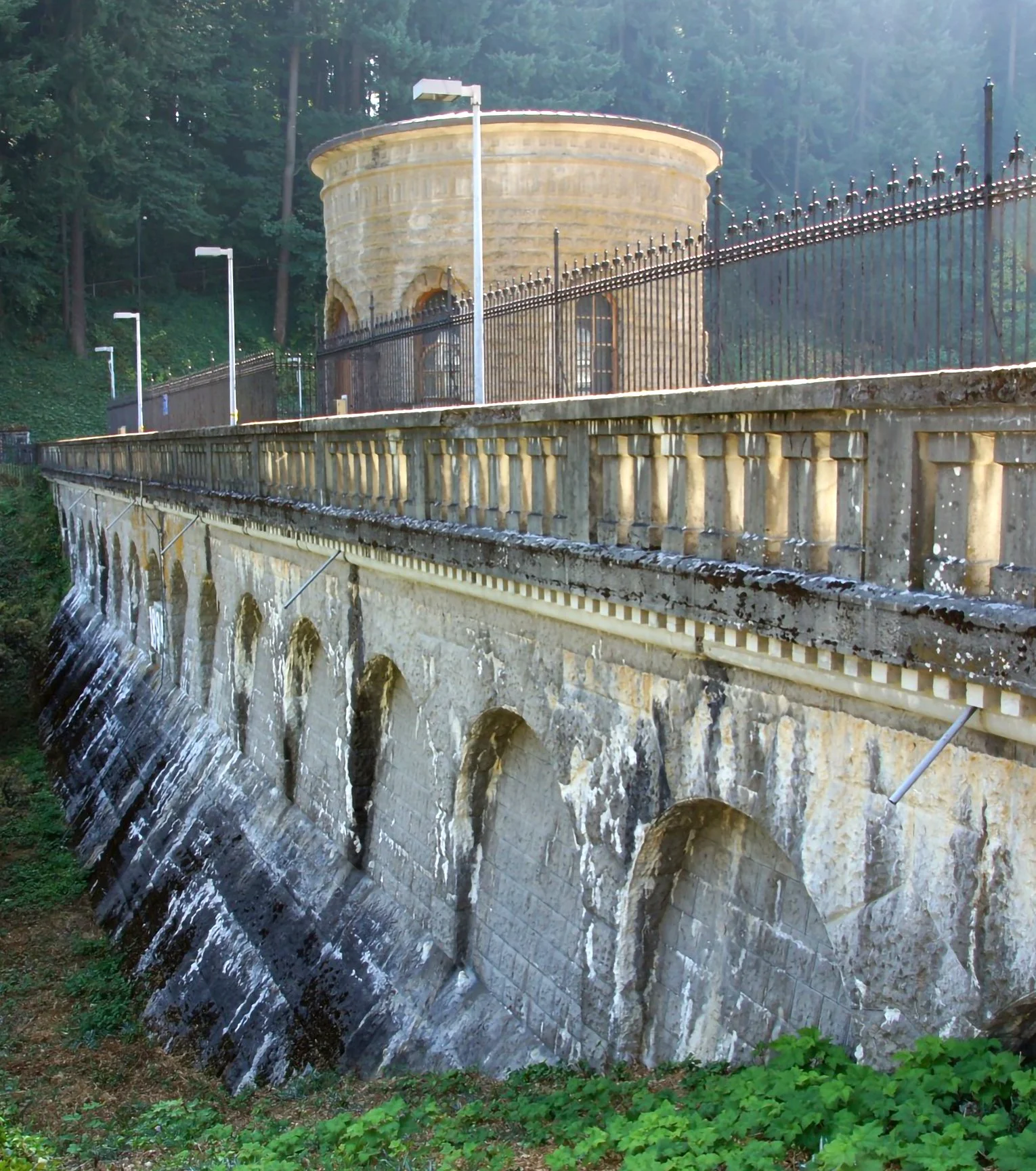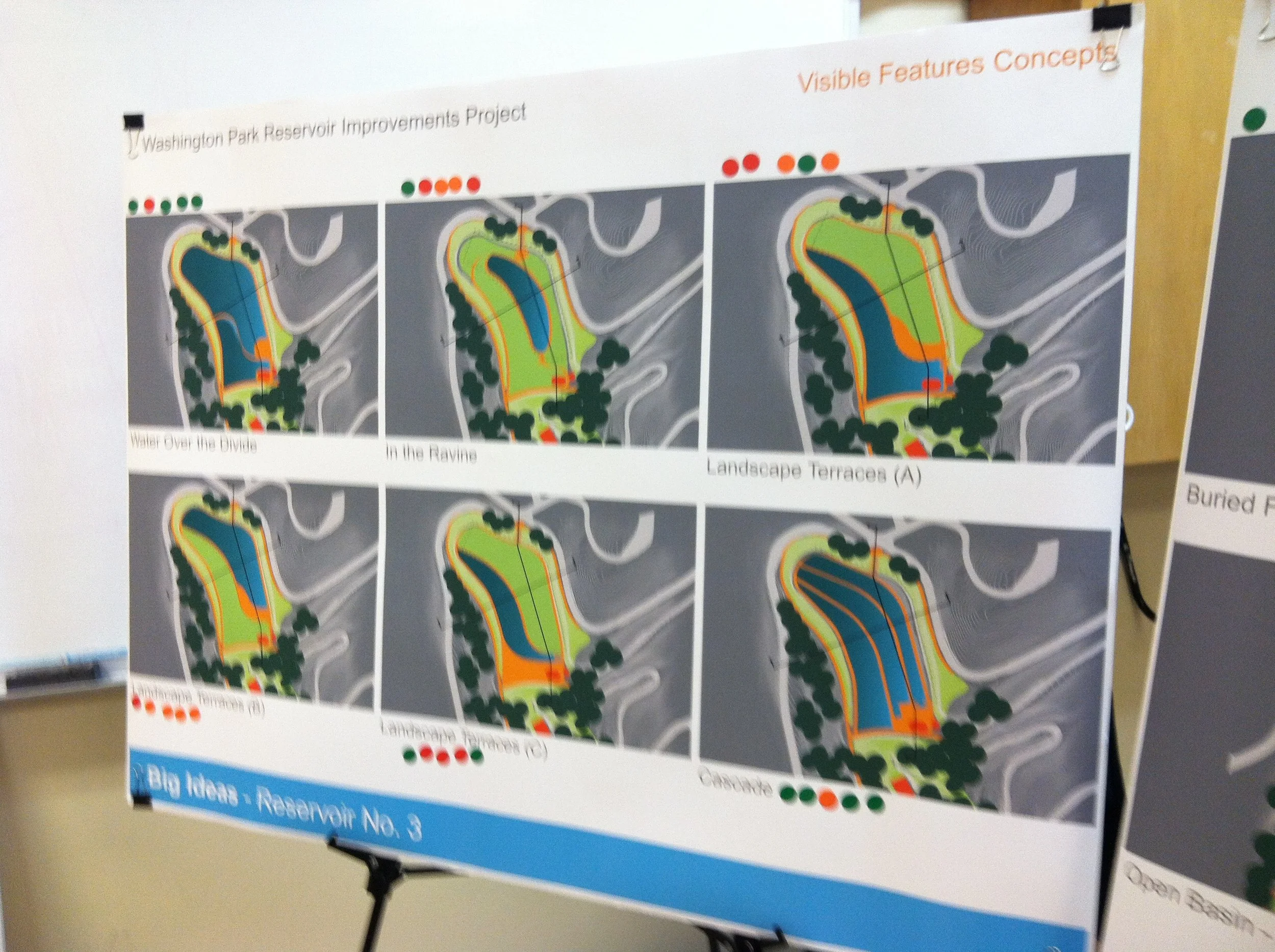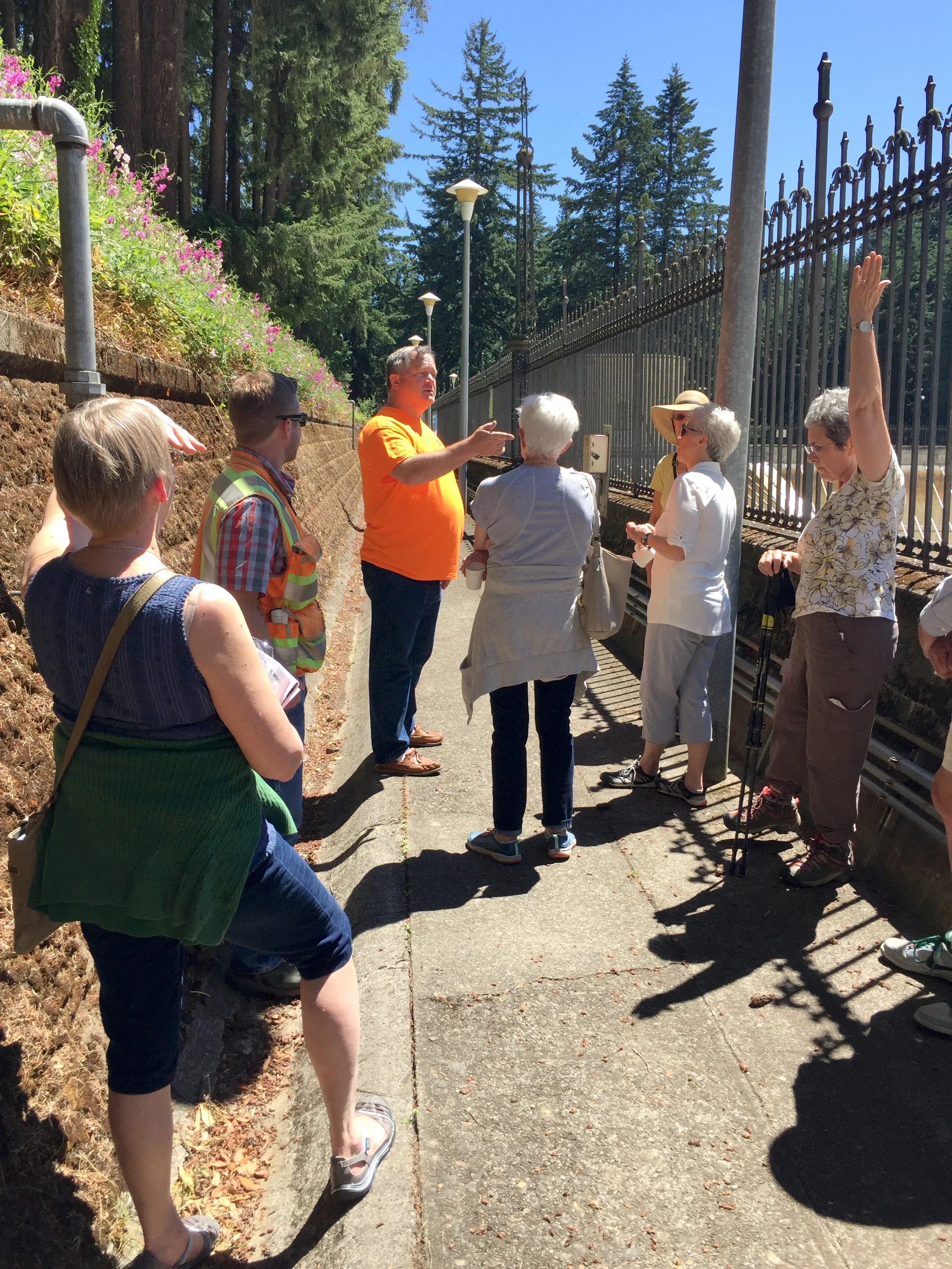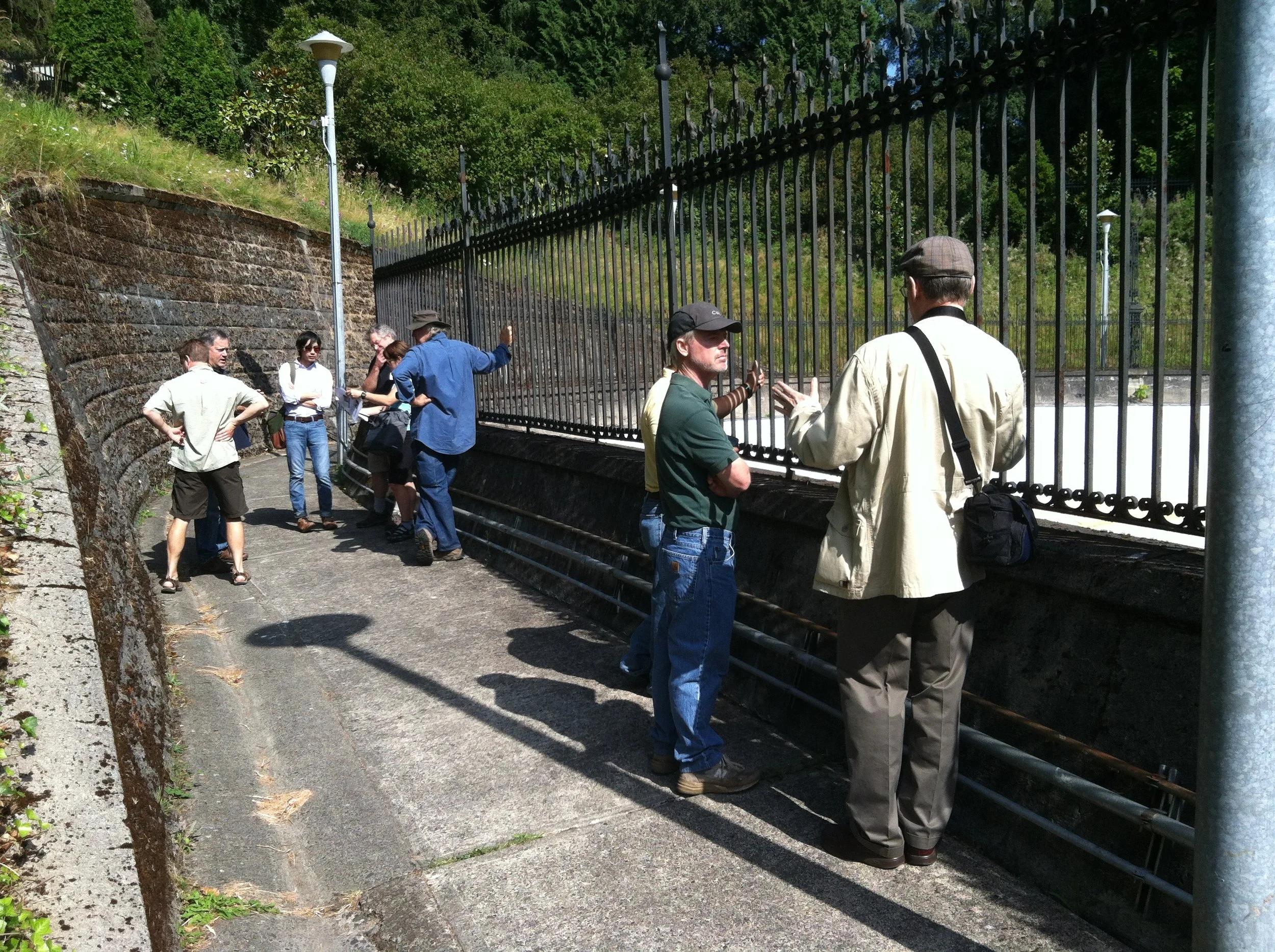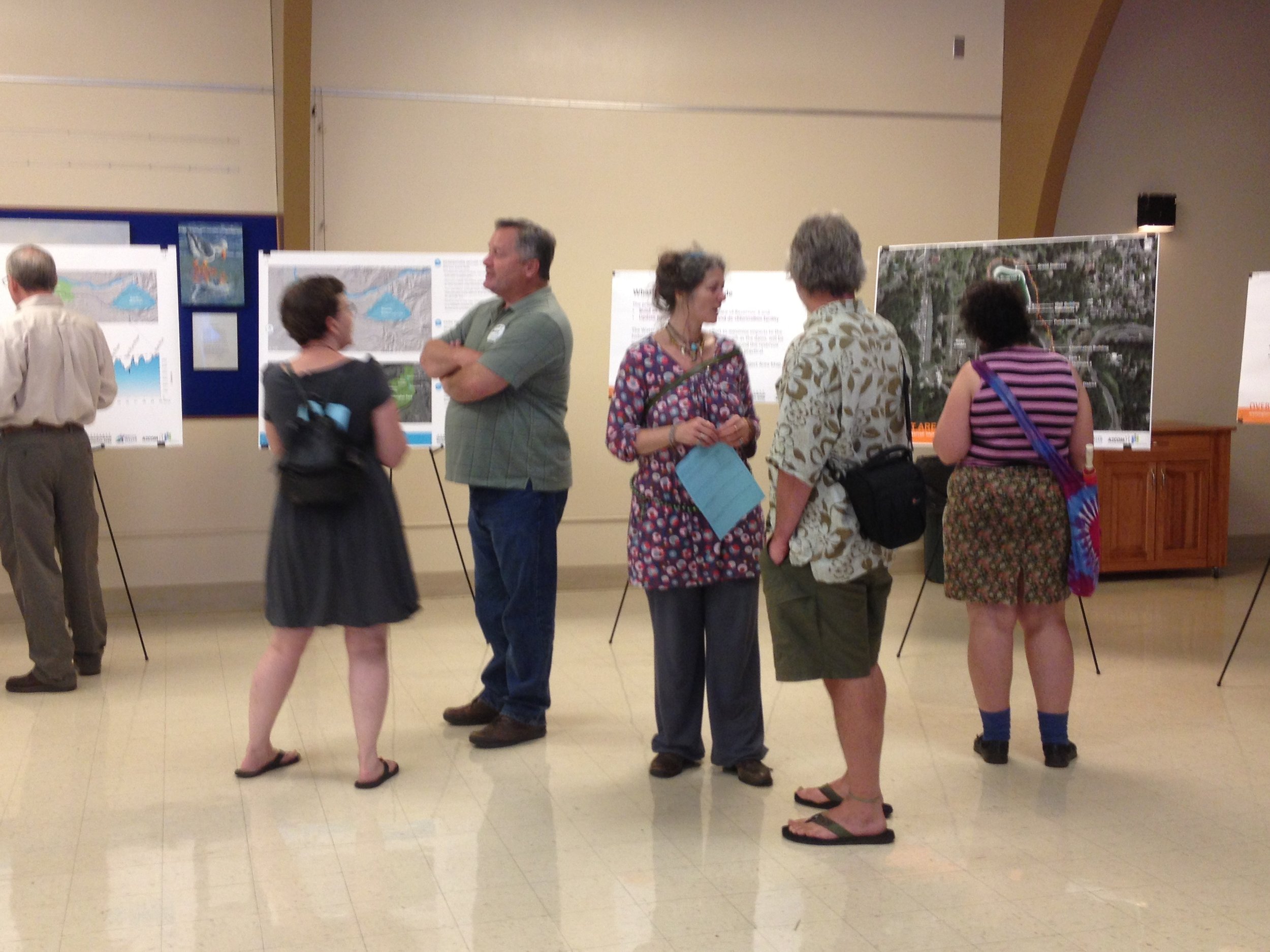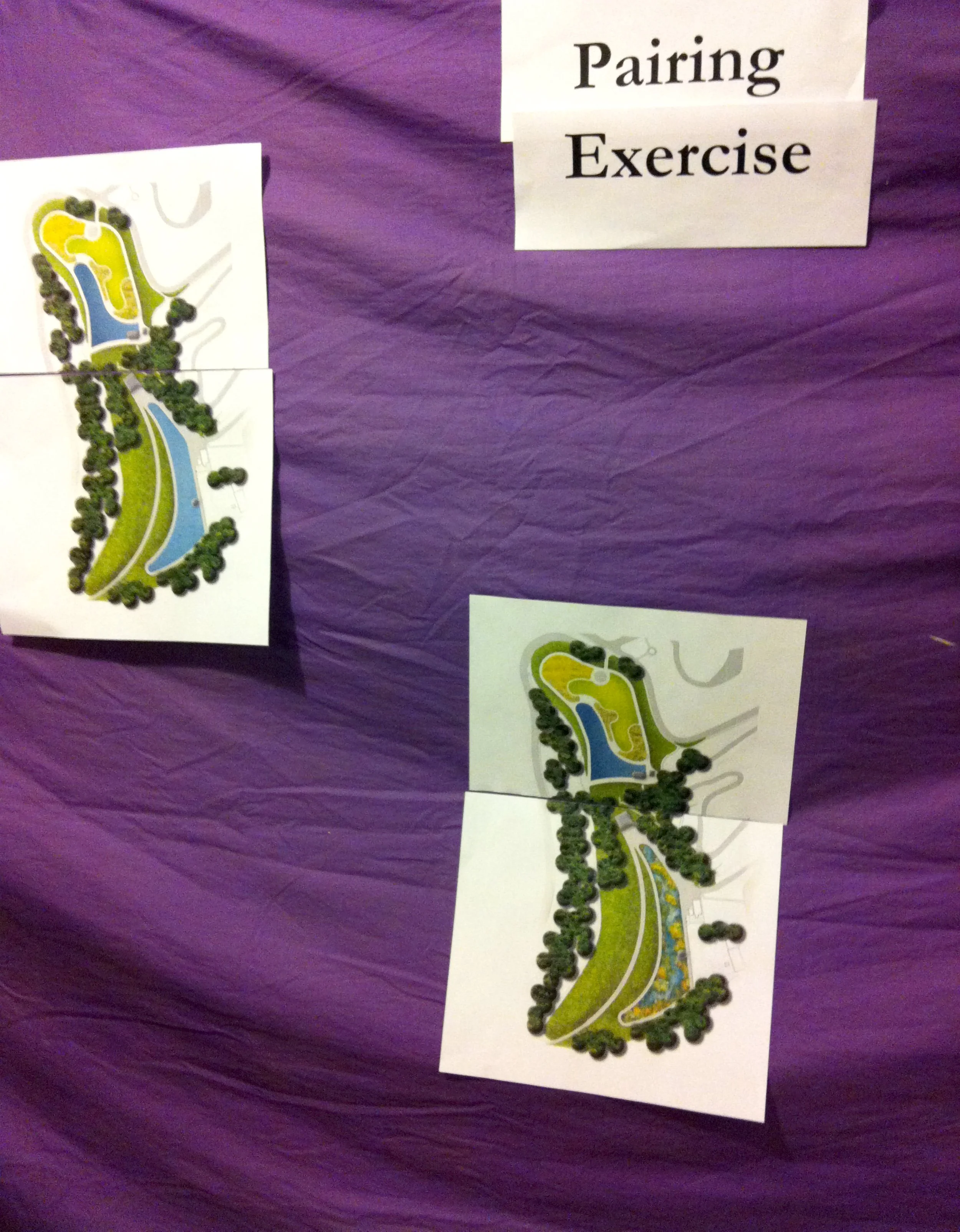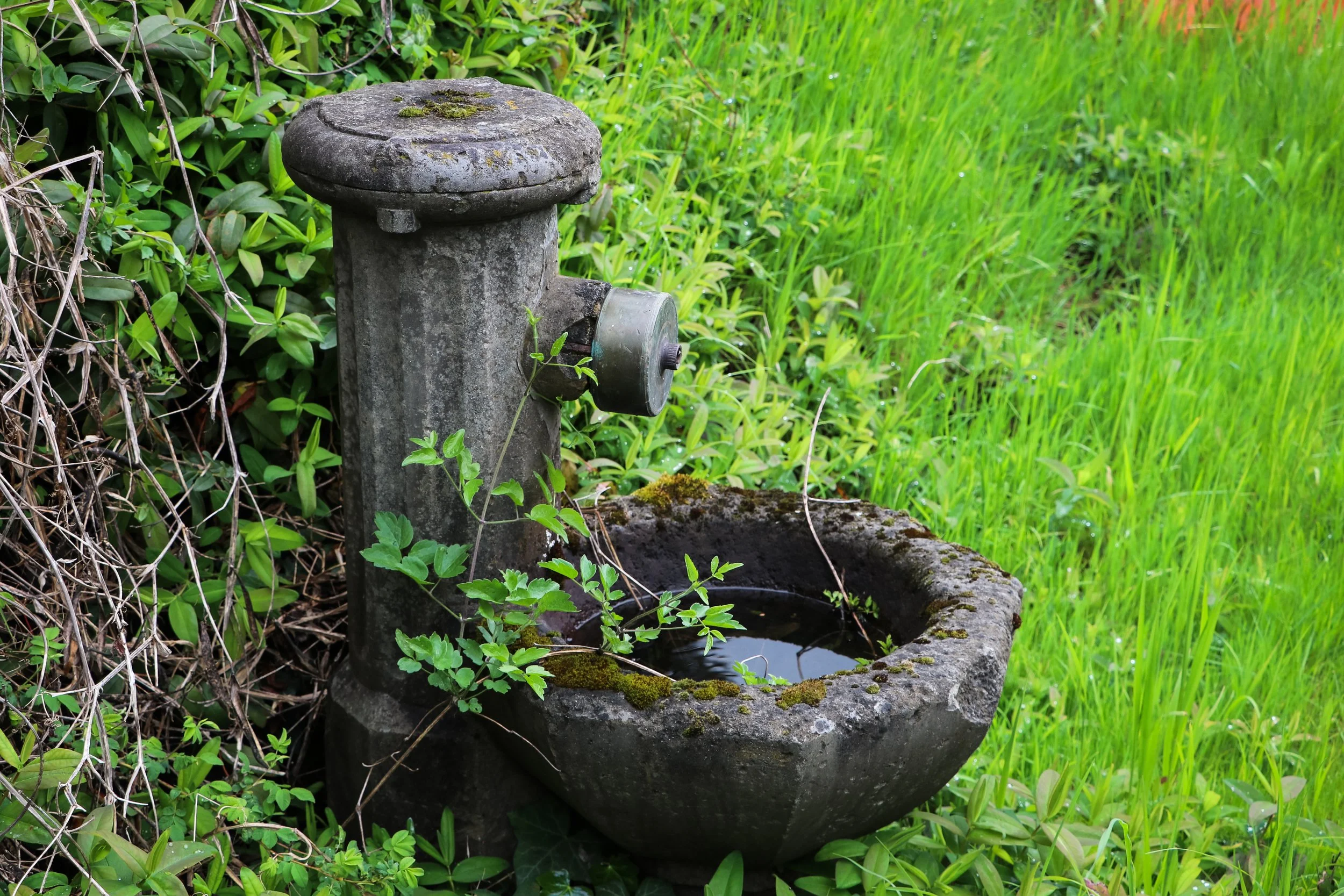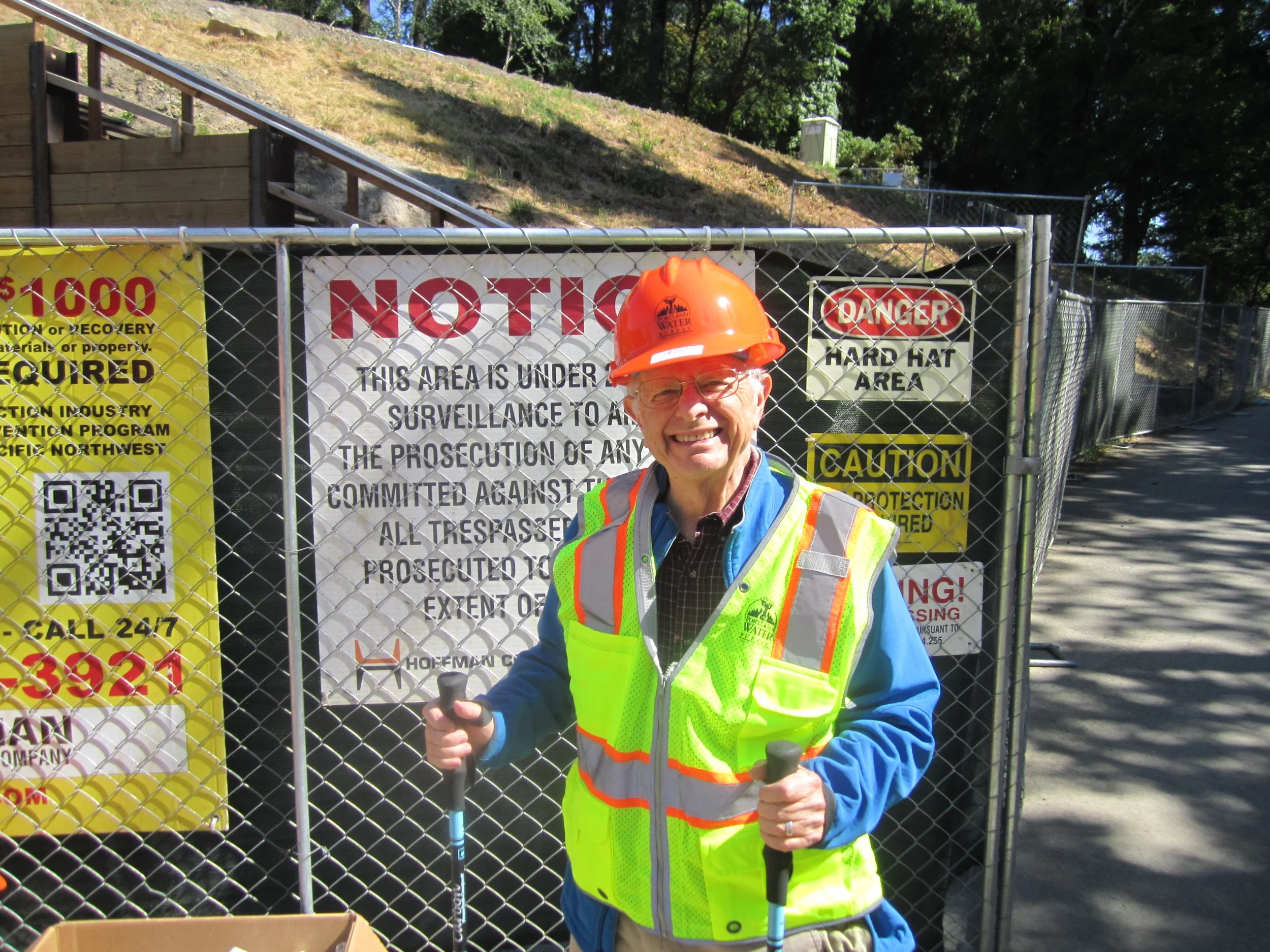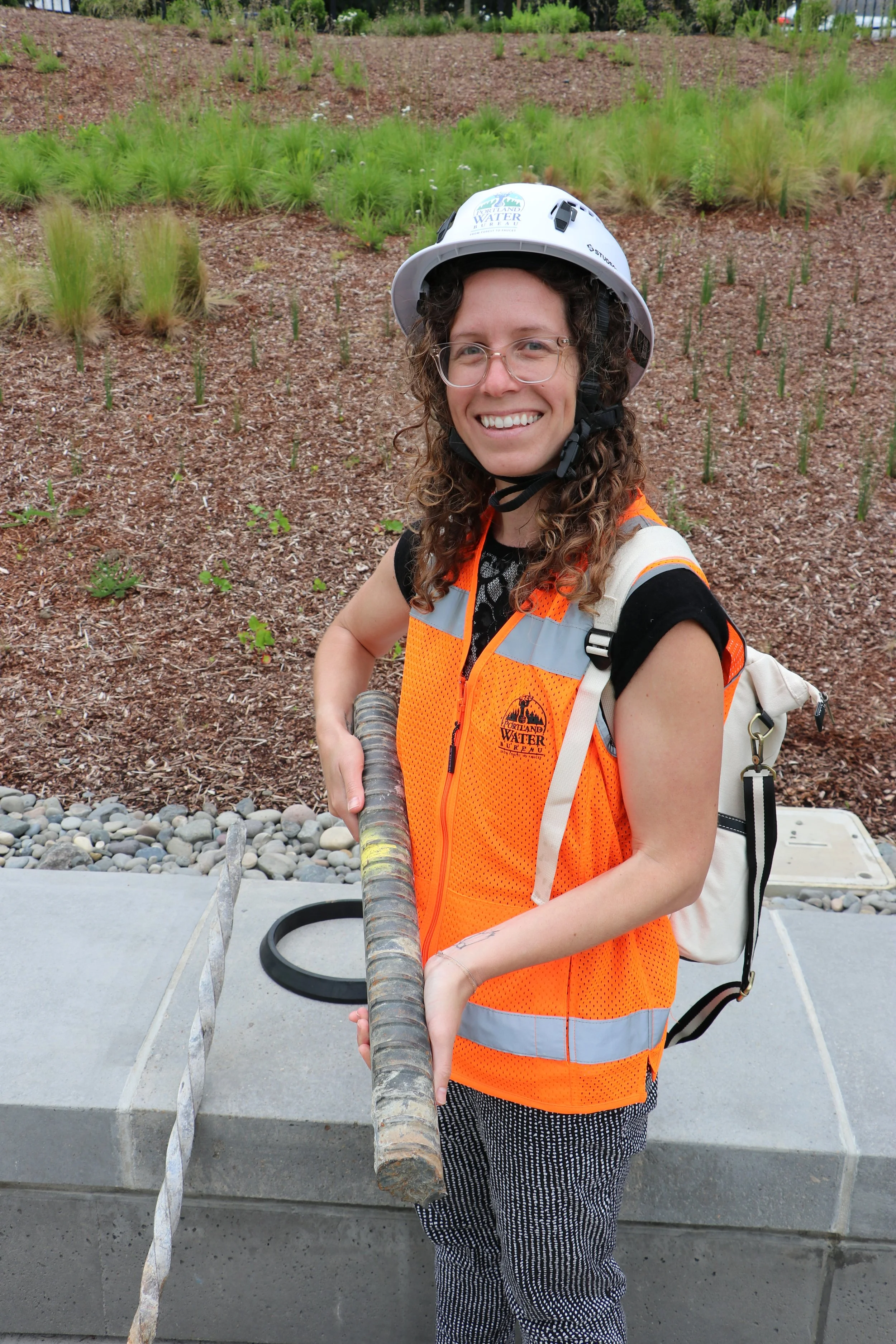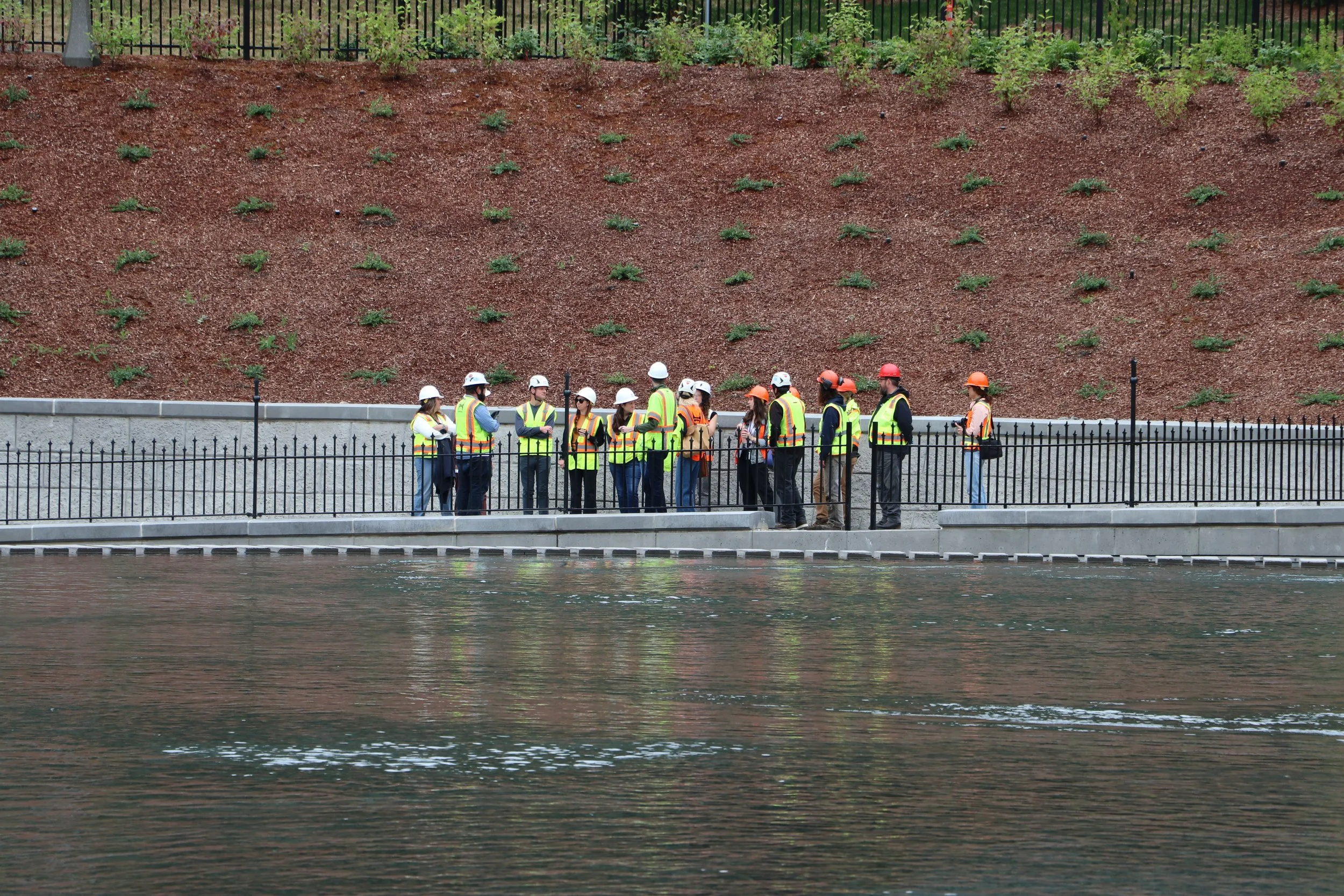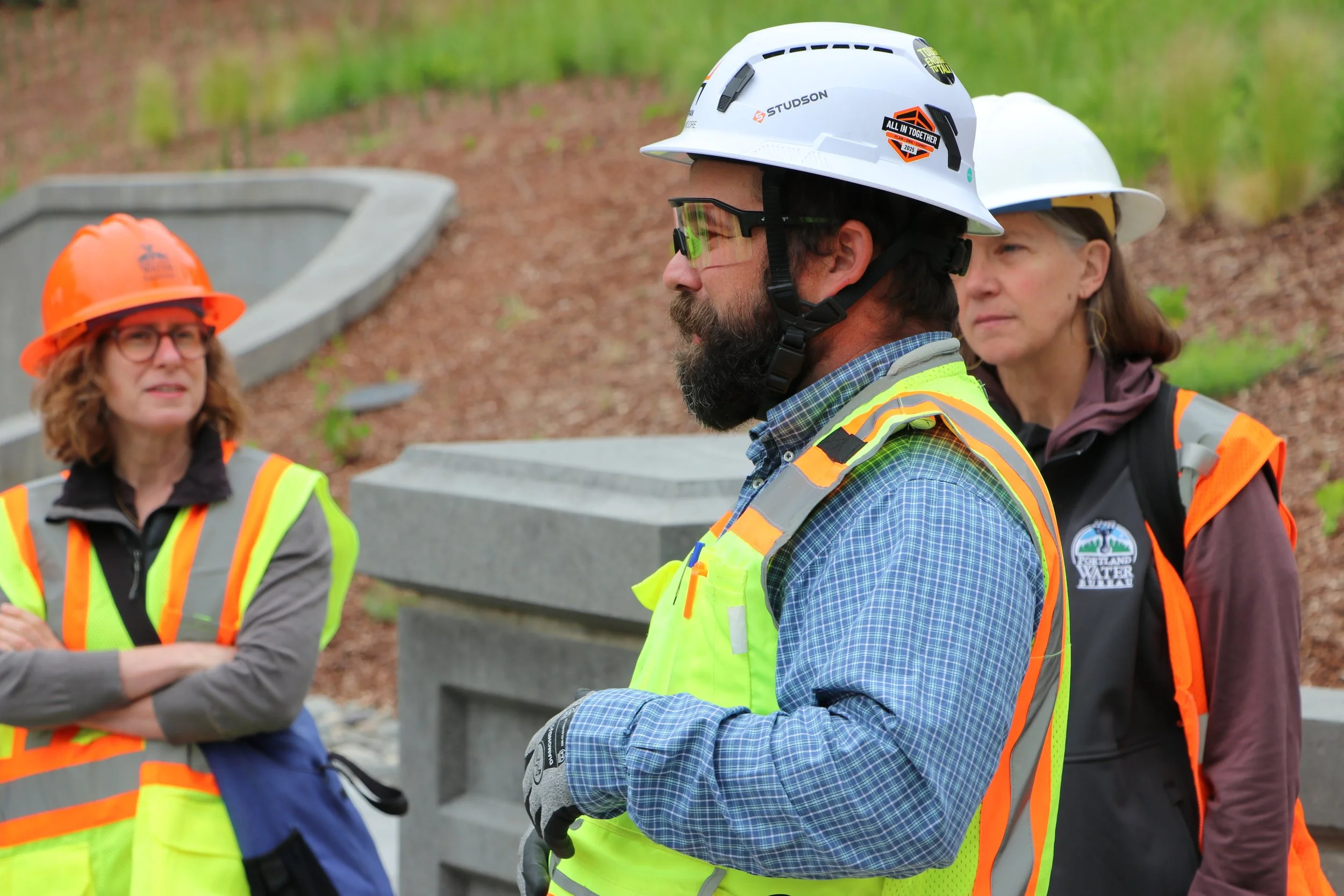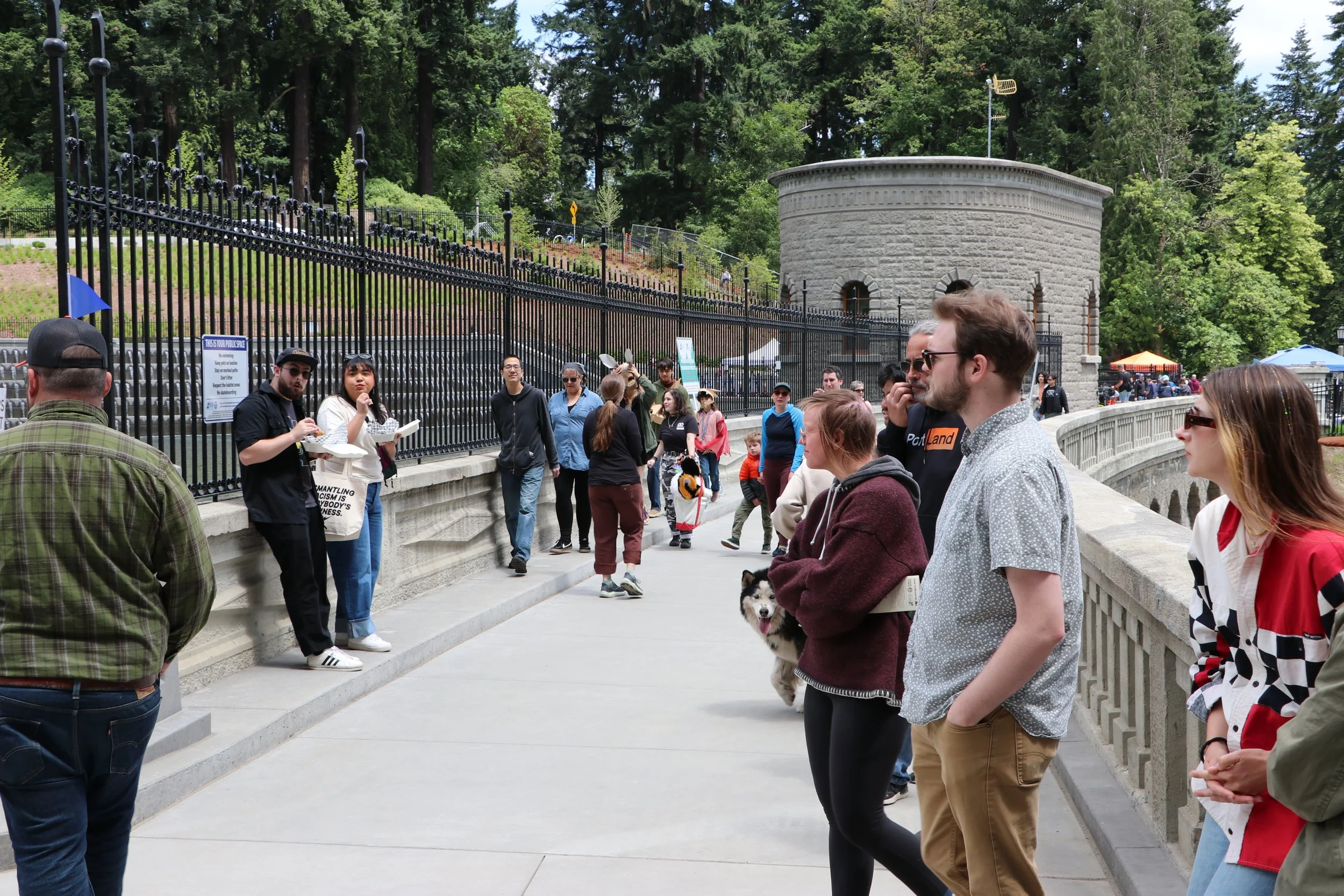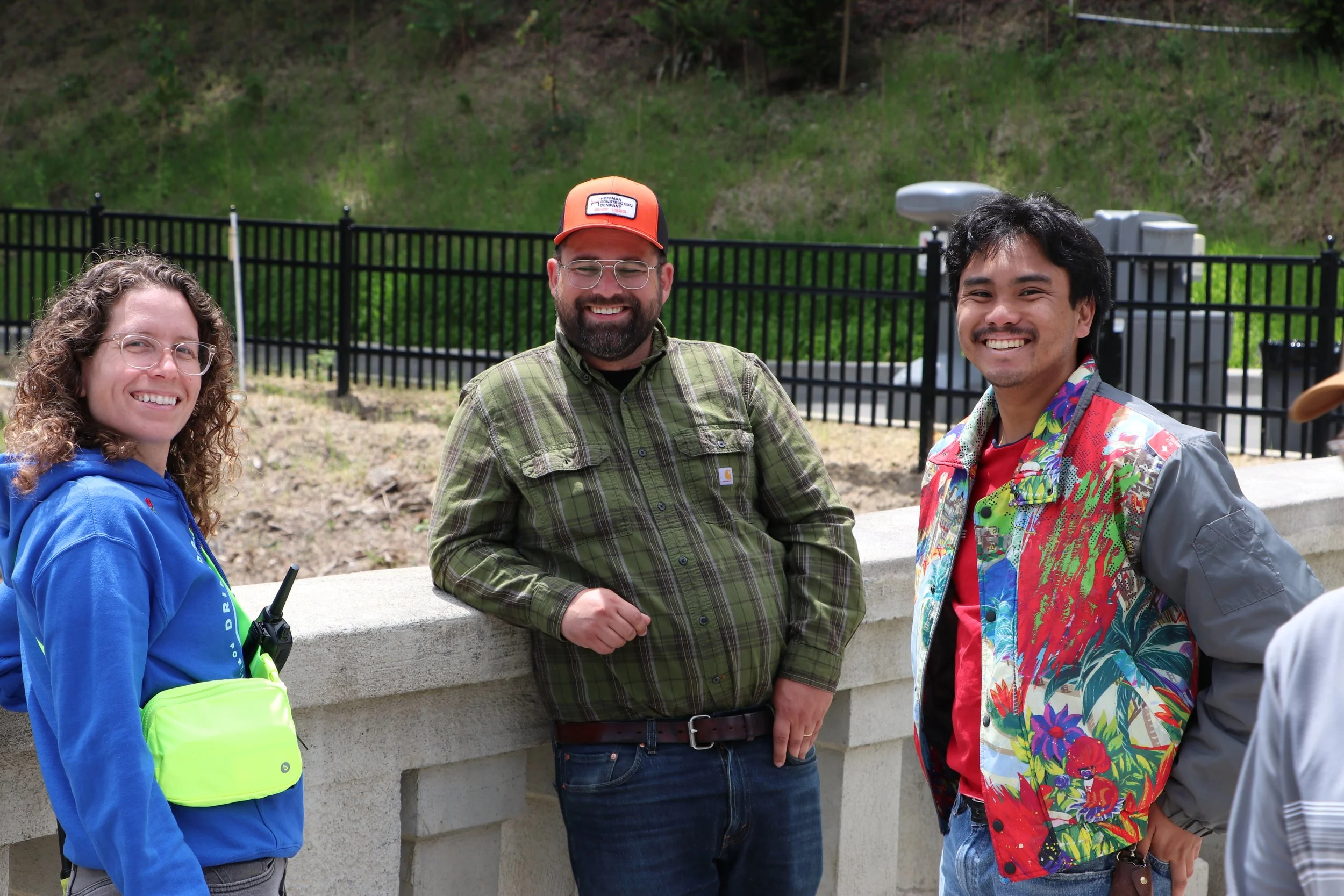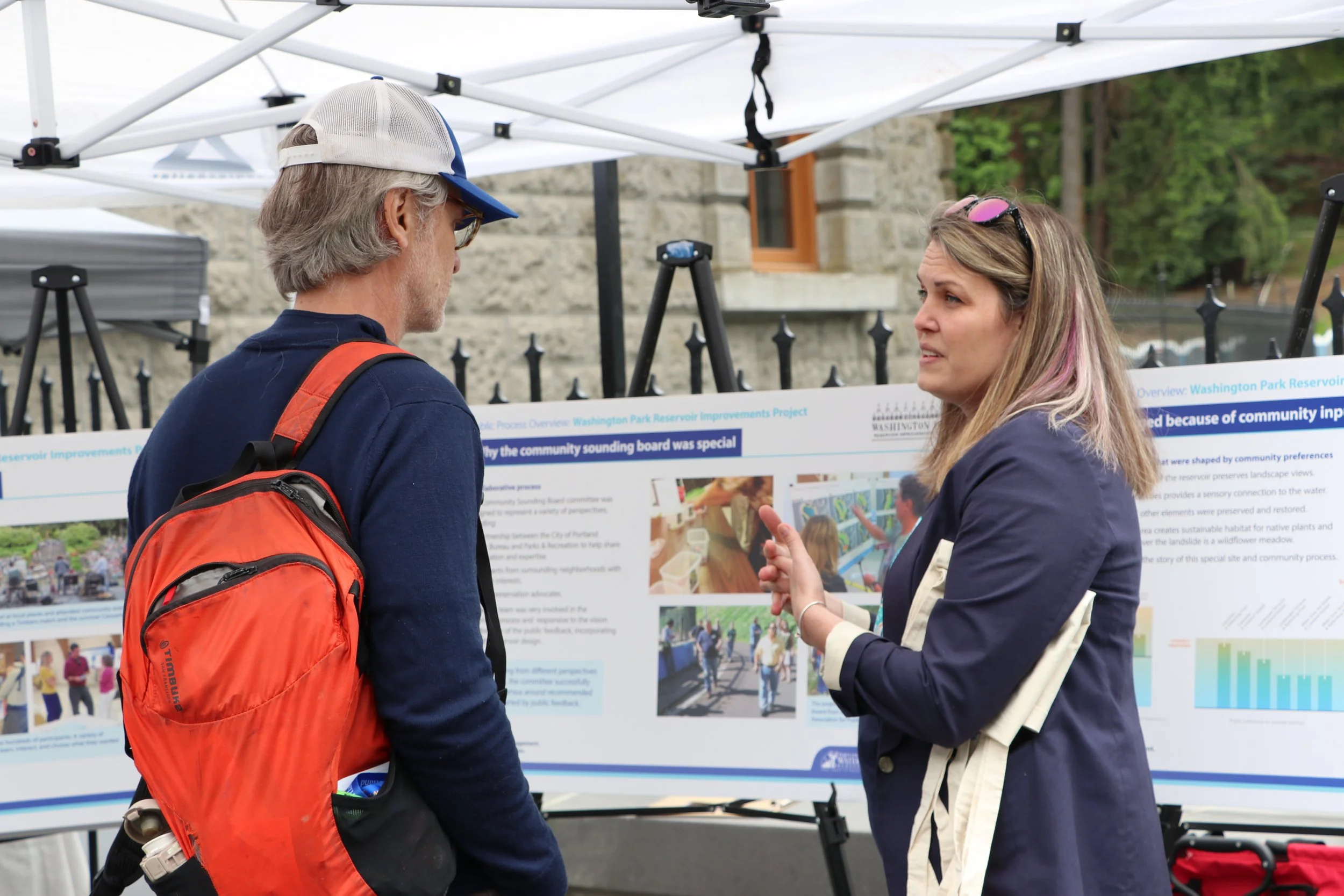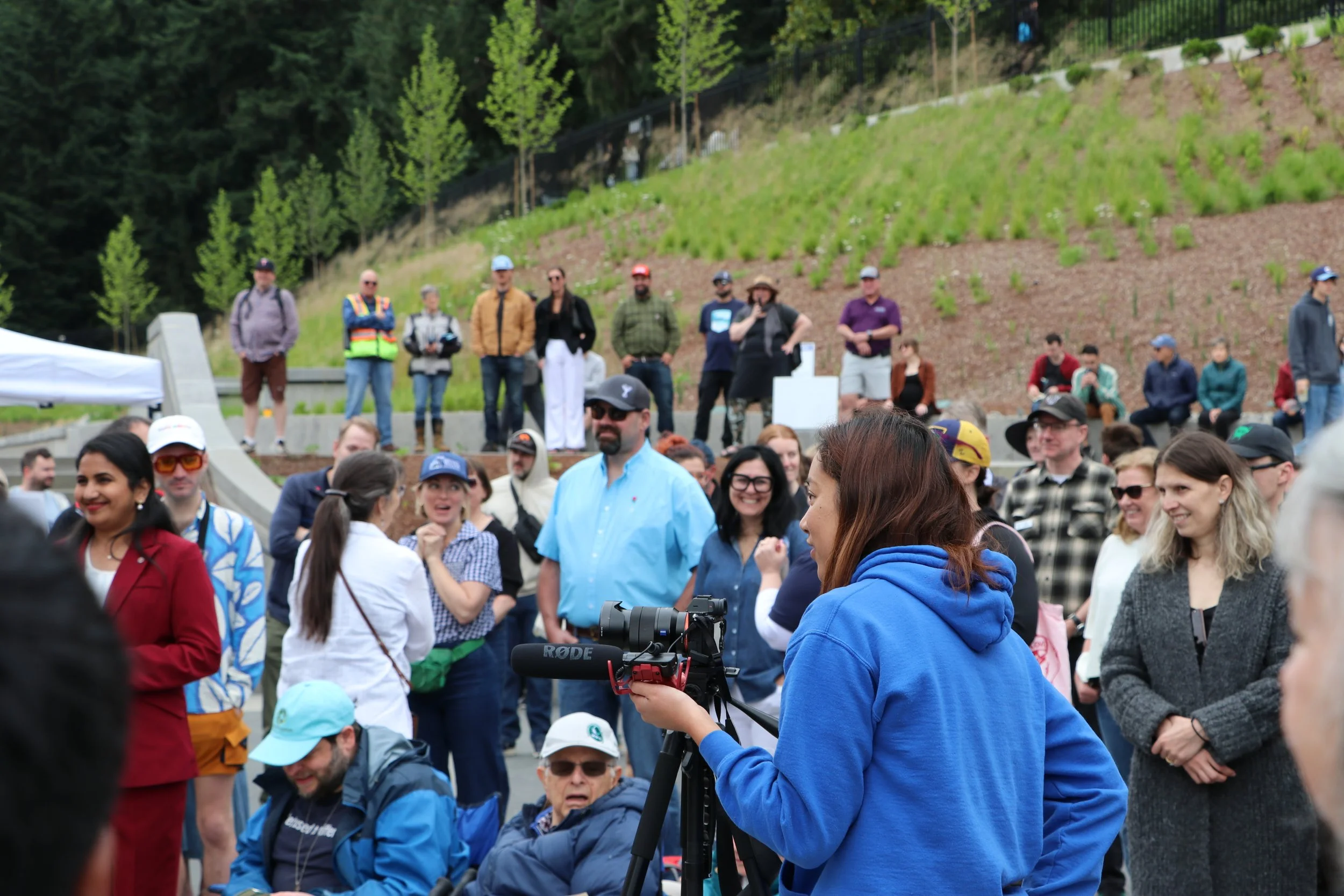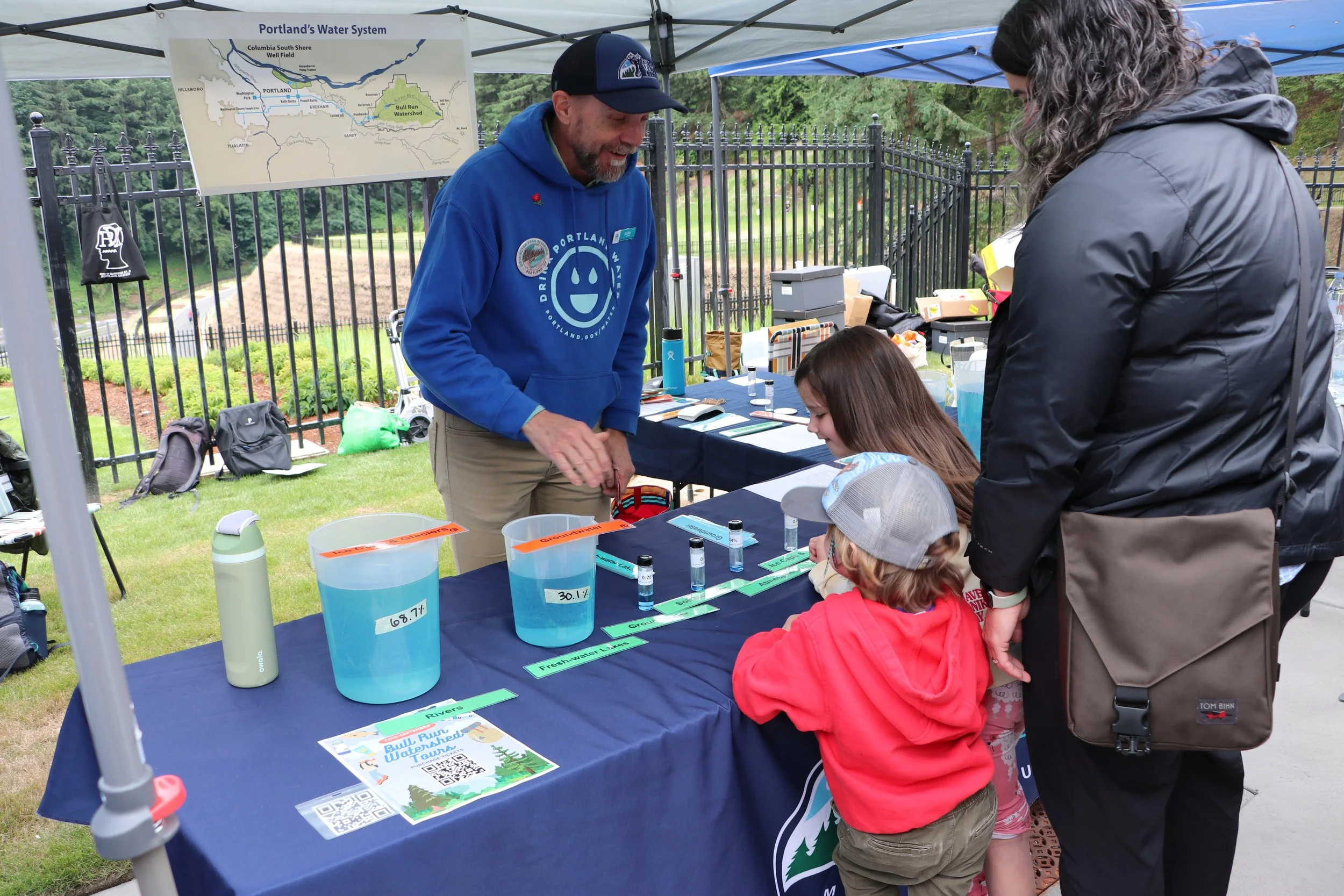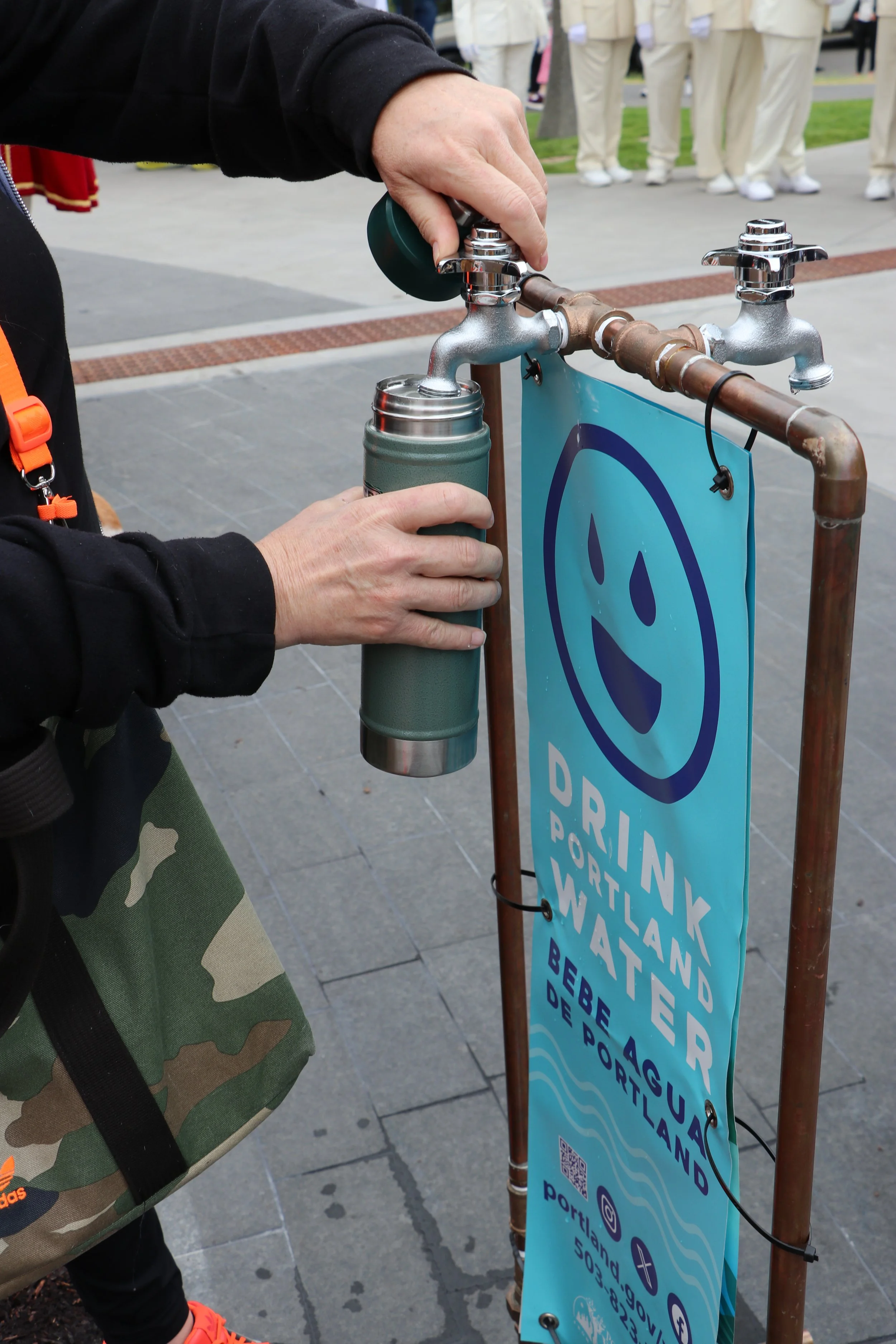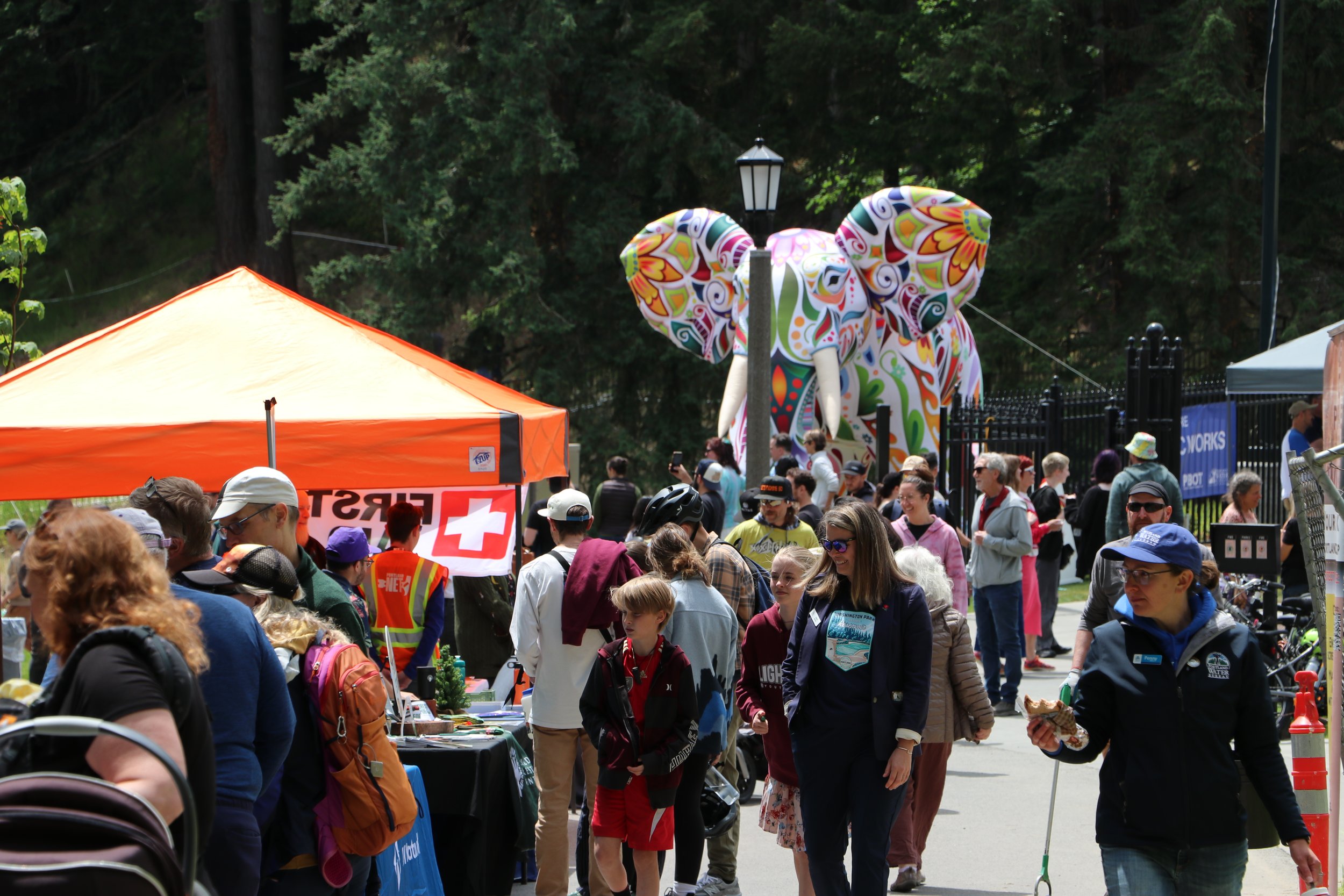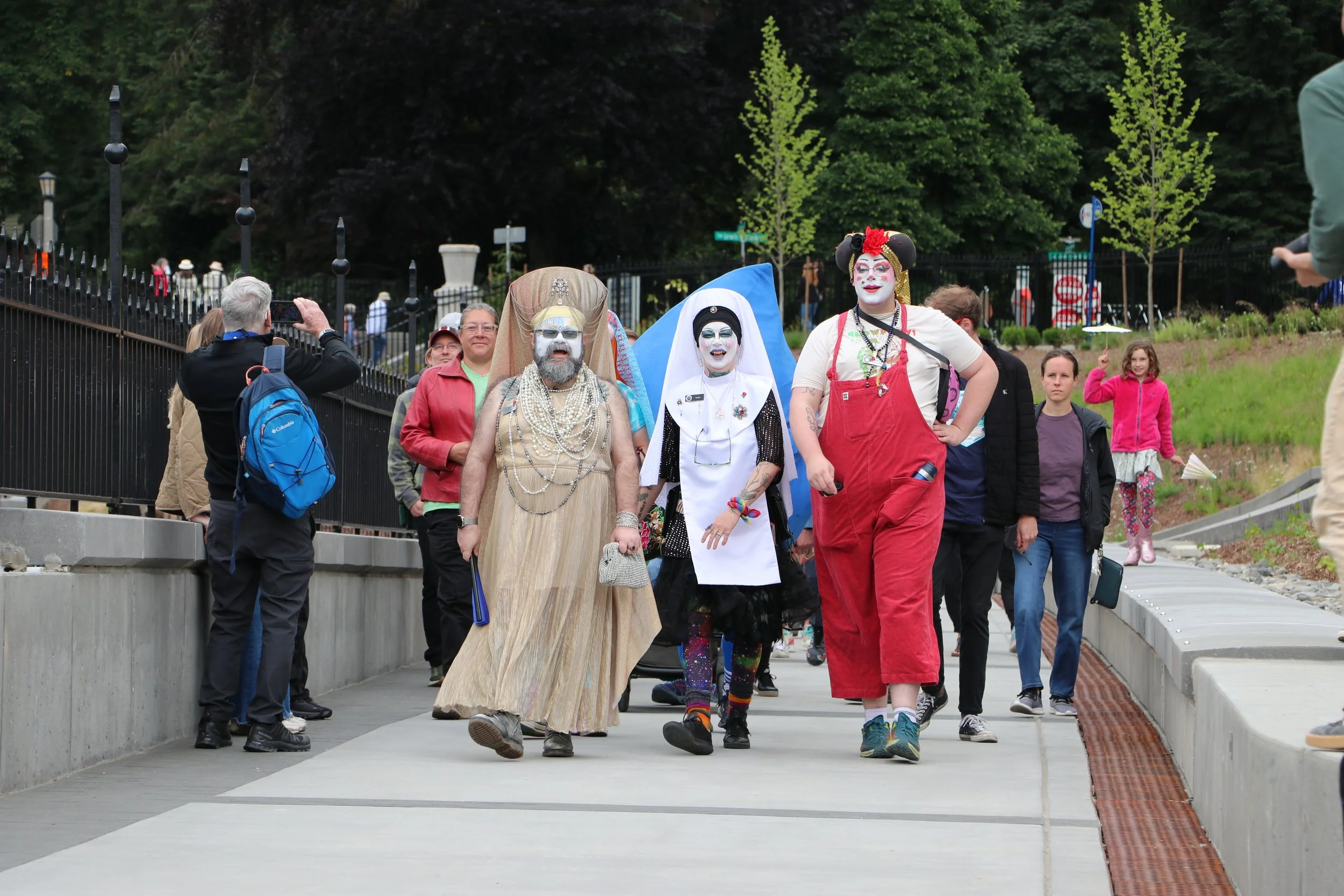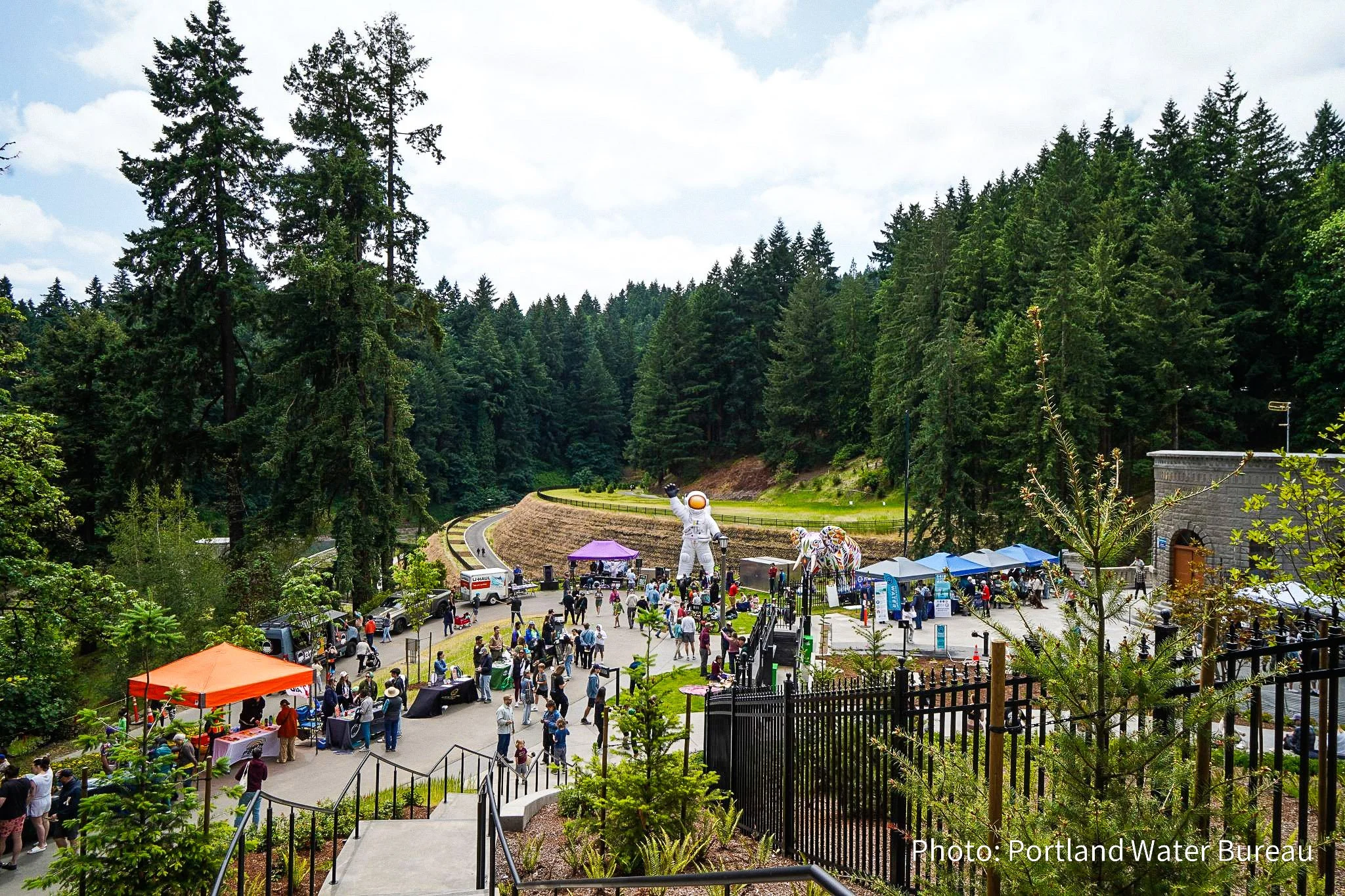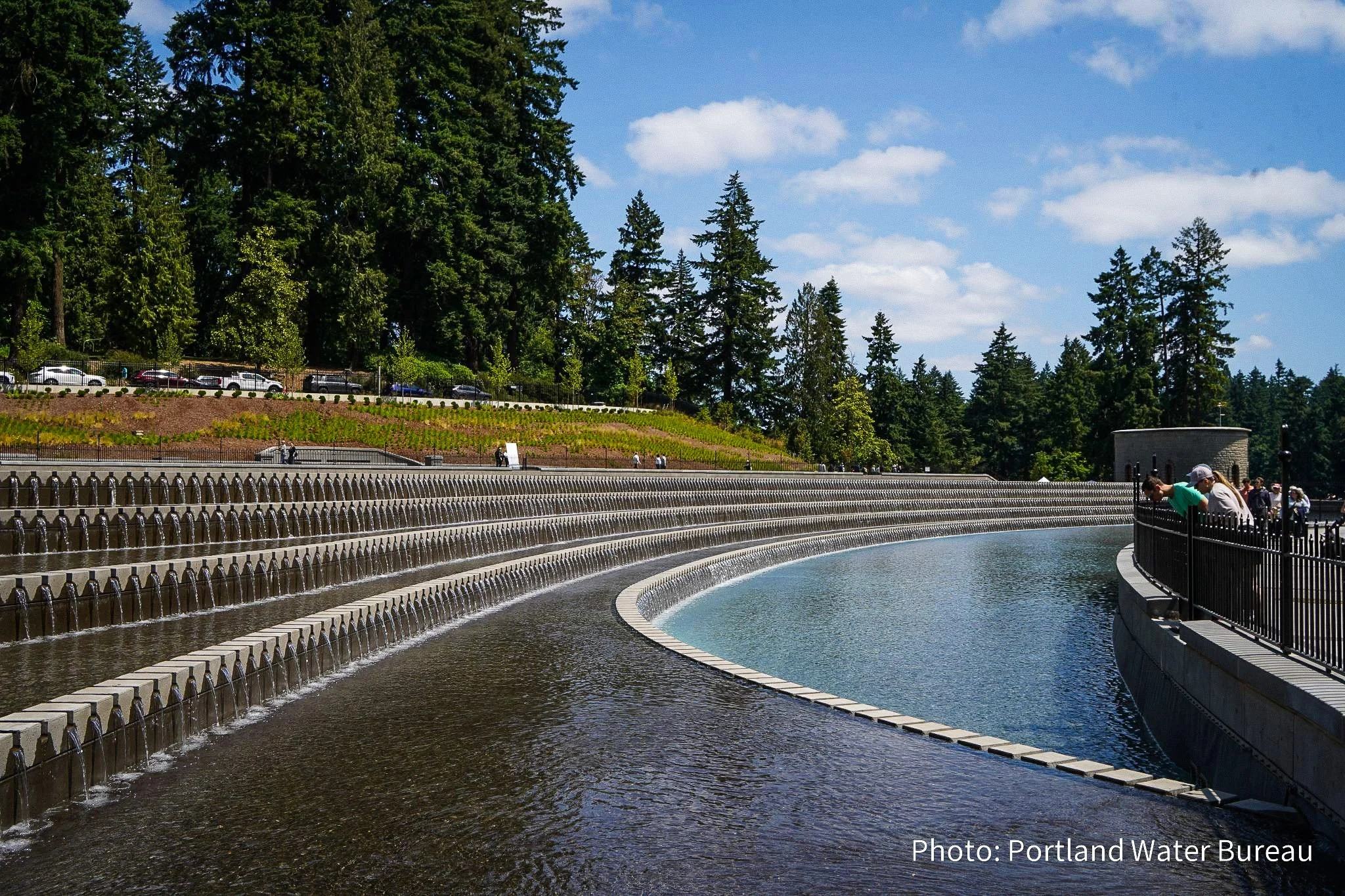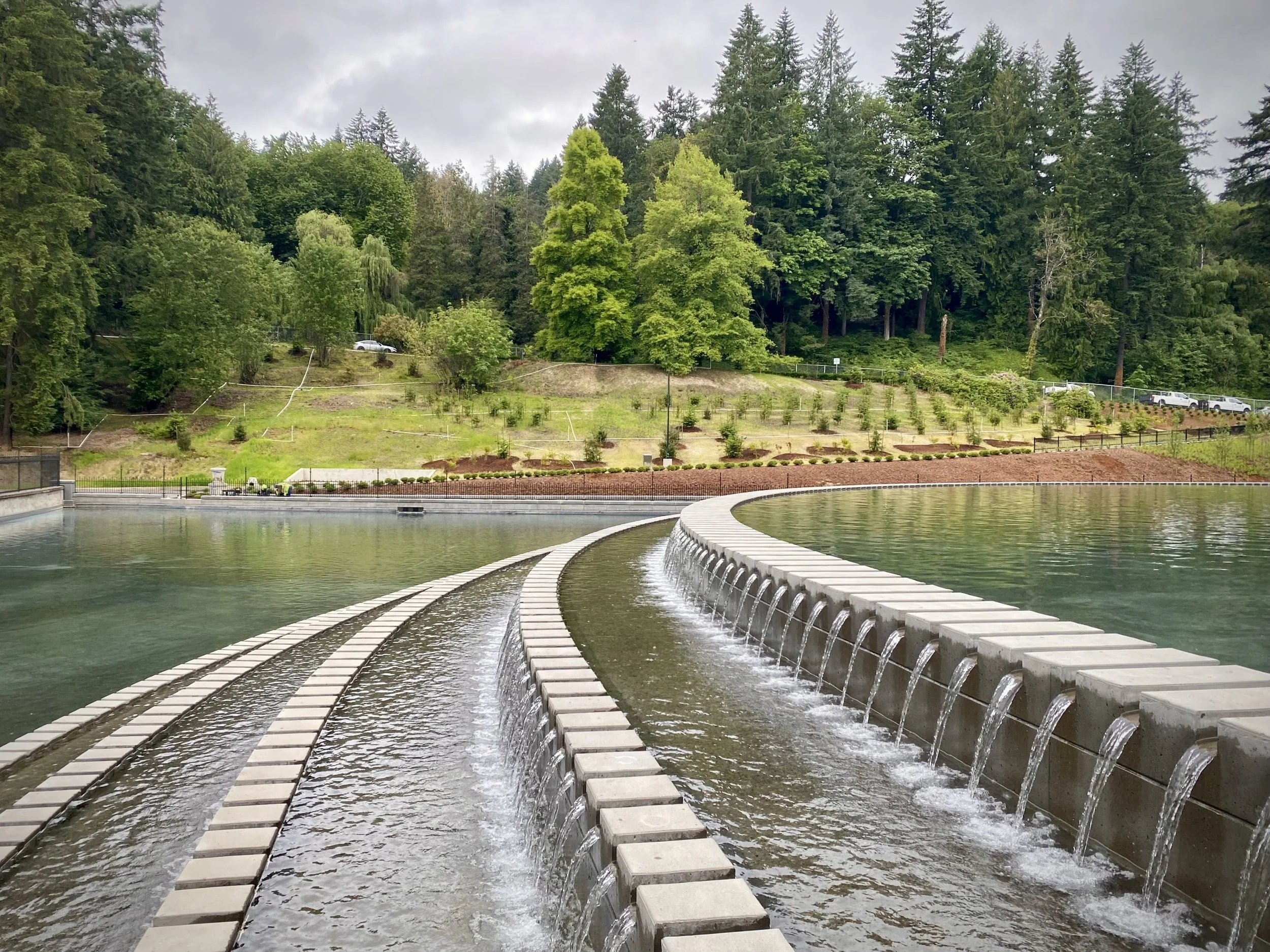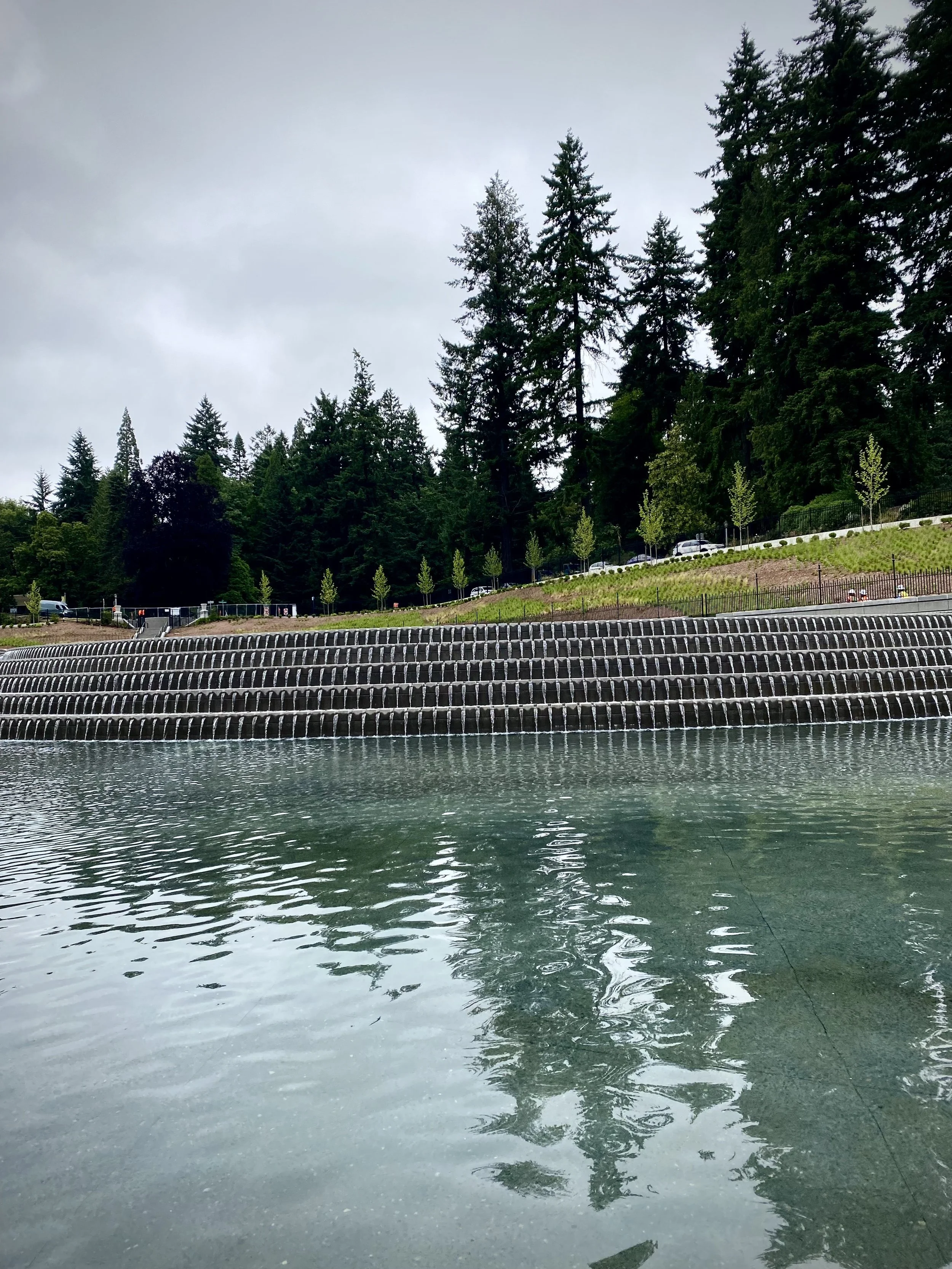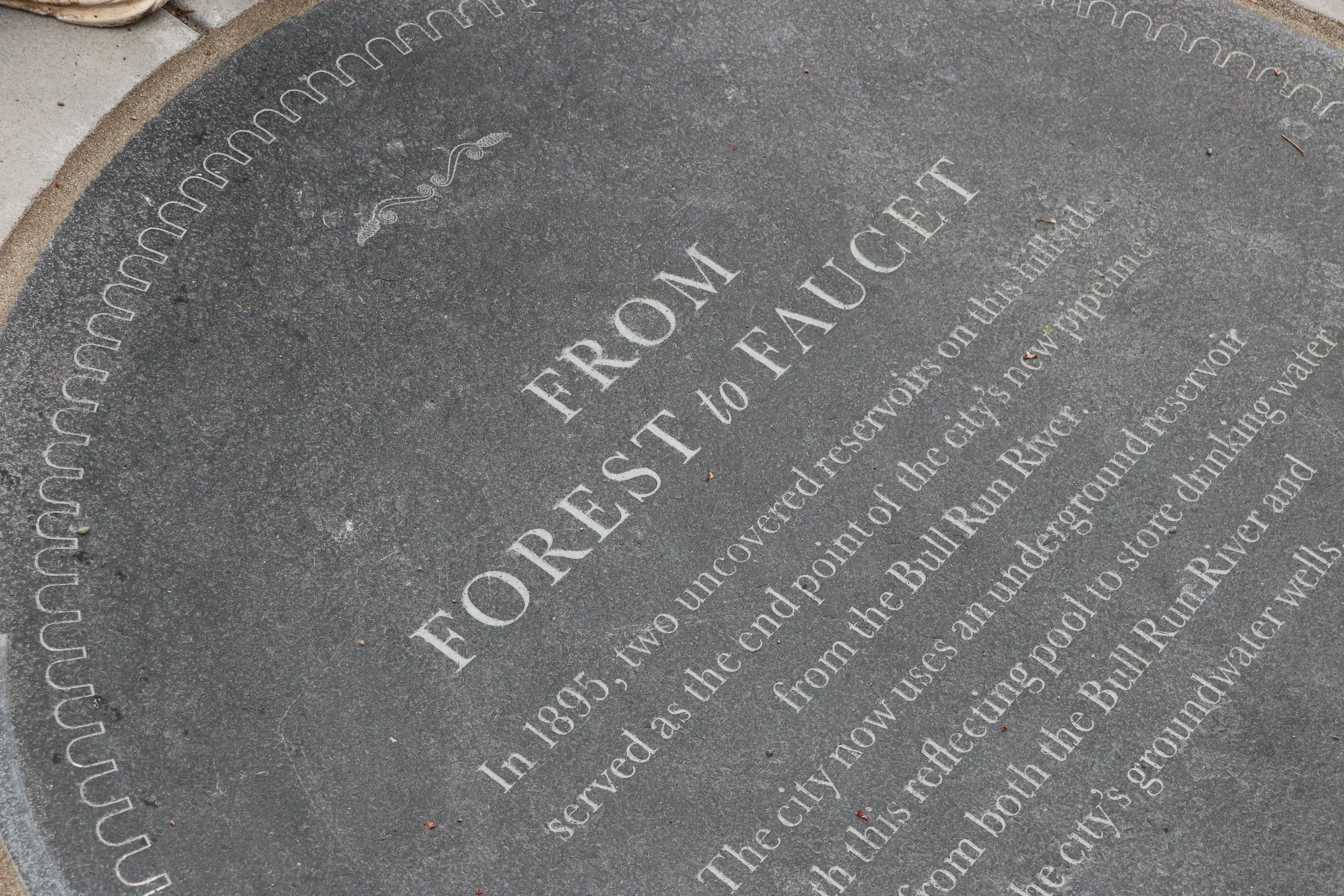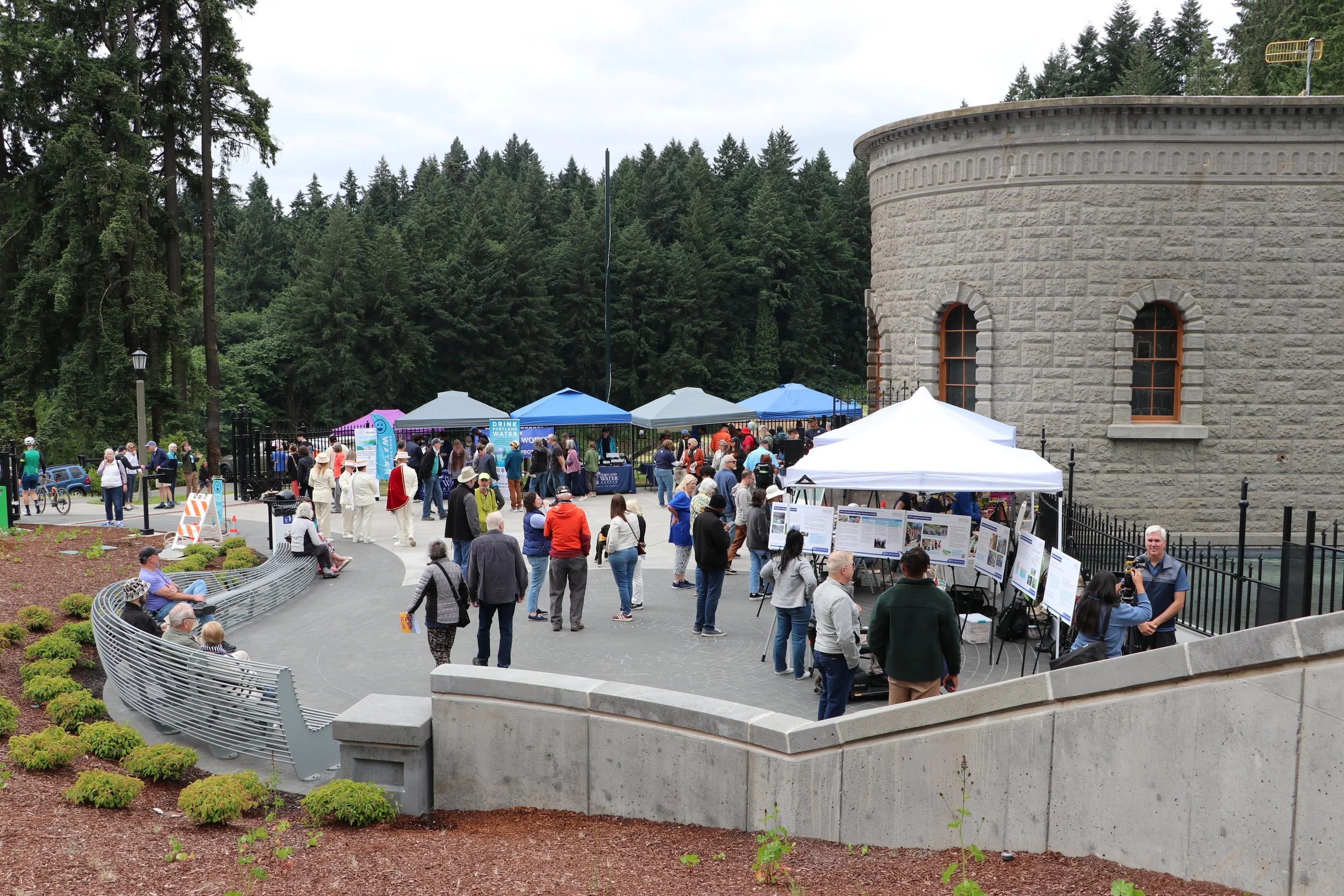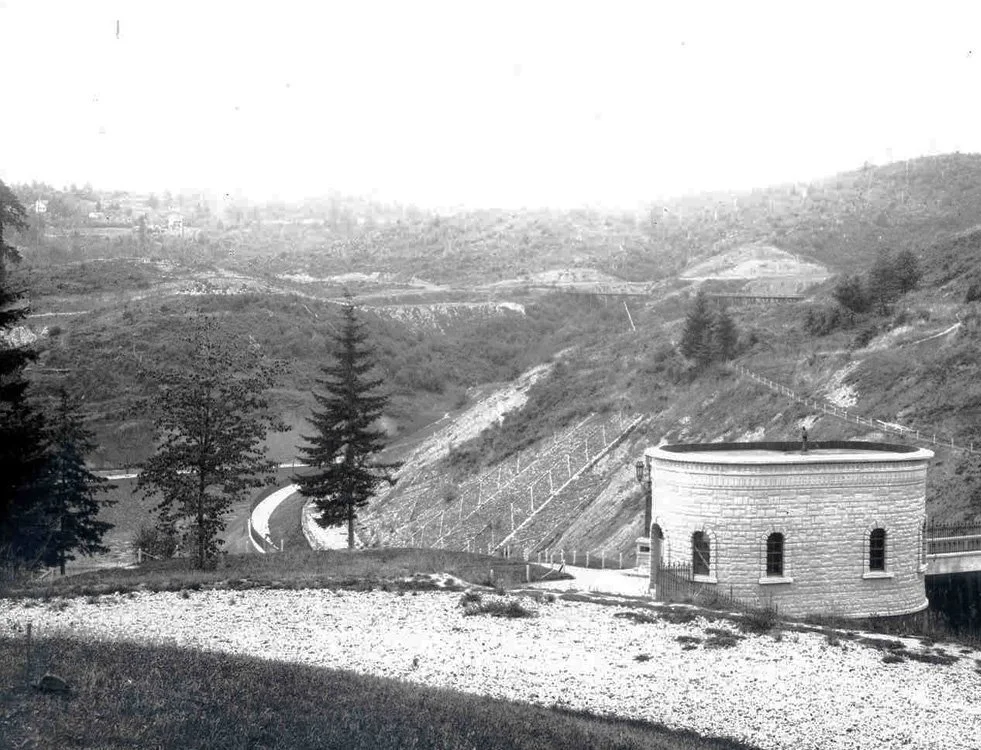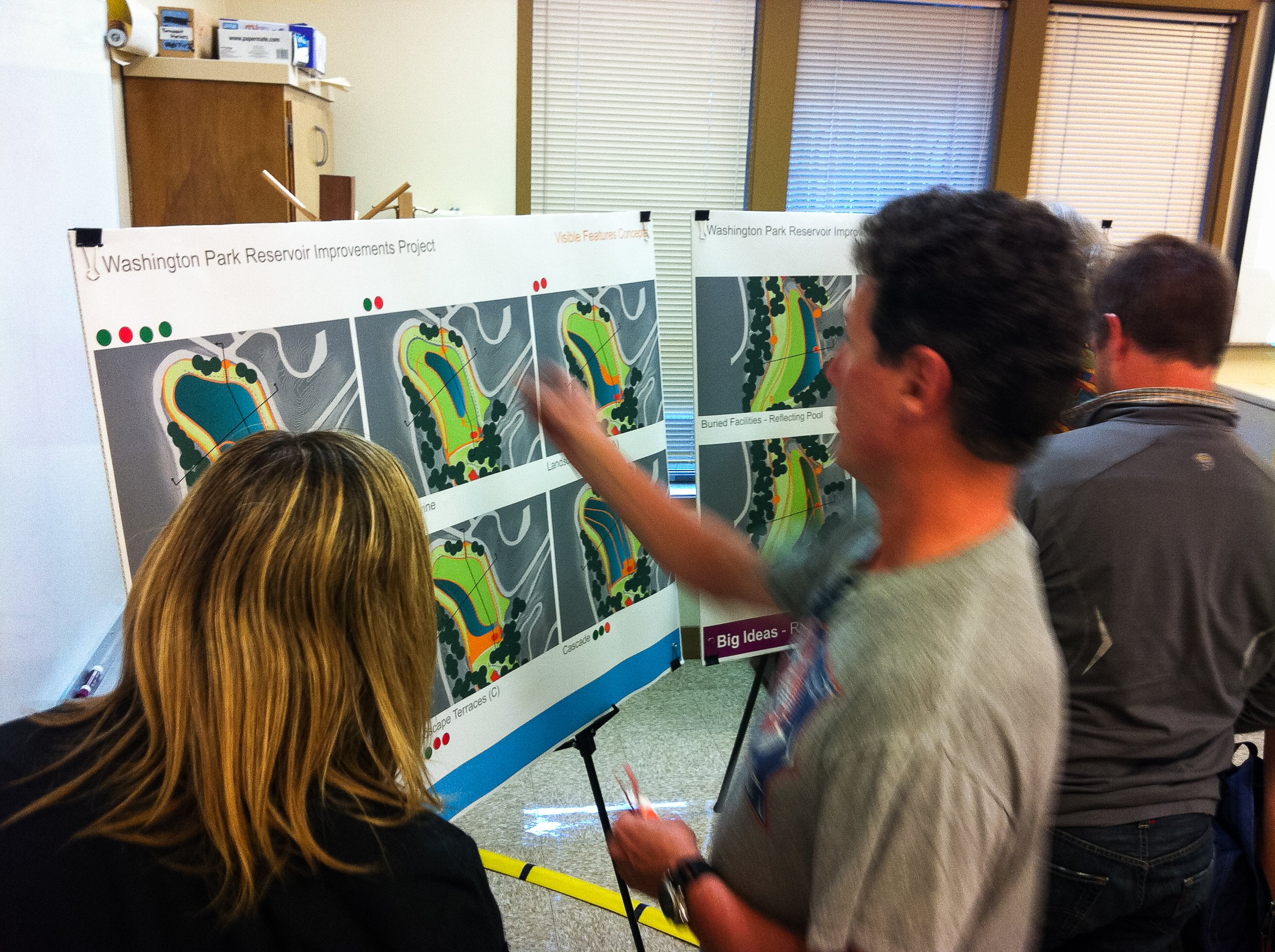
Washington Park Reservoir Improvements Project
A project shaped by community input
The Washington Park Reservoir Improvements Project created a new underground reservoir to meet drinking water regulations and make the water system more reliable, resilient and secure. Improvements to the site also included new public access and amenities, community benefits that will be enjoyed by visitors to Washington Park for generations to come. JLA supported this special project for more than a dozen years, helping incorporate community input into the community space visible today.
Agency
City of Portland Water Bureau »
Prime firm
AECOM (design), West Yost (construction) »
Location
Dates
2012–2025
Practice areas
Engagement Strategy and Process
Stakeholder Insights
Facilitation
Strategic Communications
Online Engagement
Digital Storytelling
Public Meetings and Events
Design and Copywriting
People
Jeanne Lawson
Sam Beresky
Jamie Harvie
Jessica Pickul
Jen Winslow
Darren Cools
The Washington Park Reservoir site provides essential public water storage for Portland areas west of the Willamette River. After more than 100 years, the historic reservoirs were failing and needed to be rebuilt, as well as undergrounded to meet federal and state drinking water regulations.
Portland’s Water Bureau envisioned an opportunity to create new public access and amenities at the reservoir site, but that was a complicated addition to the project. Undergrounding of reservoirs was a controversial topic around Portland at the time, and faced vehement protest.
The project team had to figure out how to create a community-centered design, starting from a place of public distrust.
The Big Question: How could Portland meet regulations and create a resilient water system, while honoring and improving a beloved historical site, and involve the community in design decisions during times of public controversy?
In 2013 and 2014, the Water Bureau, consultant team, and JLA Public Involvement led a process designed to rebuild trust and center community input on the public-facing portions of the reservoir site. The thoughtful process helped the public move from understanding the need for change to imagining the future site, so their input could shape the design.
The process started by introducing the project to the community, explaining the regulatory and technical needs for the changes and desire for public access. JLA then helped welcome broad community input into the design process through an extensive engagement program and the formation of a Community Sounding Board.
Despite many perspectives and priorities, the community was able to clearly voice thier values and priorities, which were thoughtfully incorporated into designs. The Community Sounding Board reached consensus around a recommended design, which successfully passed through an extensive permitting process, buoyed by strong community involvement and support for designs.
From controversy to collaboration: What started with skepticism became a shared success story for the community and City government, thanks to transparent communication, consistent commitment to values, and community partnership.
What changed because of community input
The priorities heard from community engagement were used as a basis for the design process. For example:
The stepped, low profile of the reservoir preserves landscape views.
The sound of the cascades provides a sensory connection to the water.
Historic fencing and other elements were preserved and restored.
The lower reservoir area creates sustainable habitat for native plants and wildlife, and the hill over the landslide is a wildflower meadow.
Interpretive signs tell the story of this special site and community process.
Celebrating a new community space
The much-anticipated public opening celebration was held in June 2025. Remarks from community members and the many people who contributed to the project remind us that public projects can be a reason for us to come together. When done right, public involvement improves project outcomes, builds trust, and strengthens our communities.
A decade in the making
JLA continued to support community engagement throughout more than 10 years of construction. The extensive timeline was required due to the technical complexity of the project, including preserving and restoring historic features and geotechnical work to accommodate an ancient landslide.
More than just a successful outcome
For JLA, this project will alwasy be more than a reservoir or a park. It’s a model for how public projects can be successful while staying grounded in their values through community participation and collaboration.
This work was recognized with a Public Involvement Best Practices Award from the International Association of Public Participation (IAP2) Cascades Chapter.
What JLA delivered
Over more than a decade, JLA developed many public information and engagment materials, from postcards to magnets to video. The campaign helped people follow along and stay involved with the story of this mega-project.
-
Tours of the reservoir site (not accessible otherwise) were a great opportunity to get people interested. Tours with neighbors, students, elected officials and many others were held to increase interest during design and continued through construction.
-
During the design phase, the project team reached out as many community members who live, work and play around Washington Park. Activities included:
Frequent tabling at local places and attended community events throughout the project area, including a Timbers match and the summer Concerts at the Park.
One-on-one business outreach to over 150 local businesses in NW Portland and Goose Hollow.
Dozens of briefings to key community groups, historic preservation advocates and neighborhood associations, including Arlington Heights, Goose Hollow, Hillside, Northwest Heights, Sylvan-Highlands, Northwest District, Neighbors West Northwest and the Pearl District.
10,000 mailers, door hangers and postcards to more than 5,000 residents for each engagement round.
-
Public meetings drew hundreds of participants. A variety of activities let people learn, interact, and choose what they wanted to provide input on.
-
Thie site was inaccessible prior to and during construction. An interactive virtual tour explained the project, provided construction updates and allowed stakeholders to explore various phases of the project. maps.jla.us.com/washington-park-reservoirs
-
Construction on this project was complex and interesting! The JLA team developed a simple animation to help people learn more.
vimeo.com/328728574 -
The project team kept community members up to date, even during less active periods. Such as when the soil needed to settle for two years! vimeo.com/663104798

